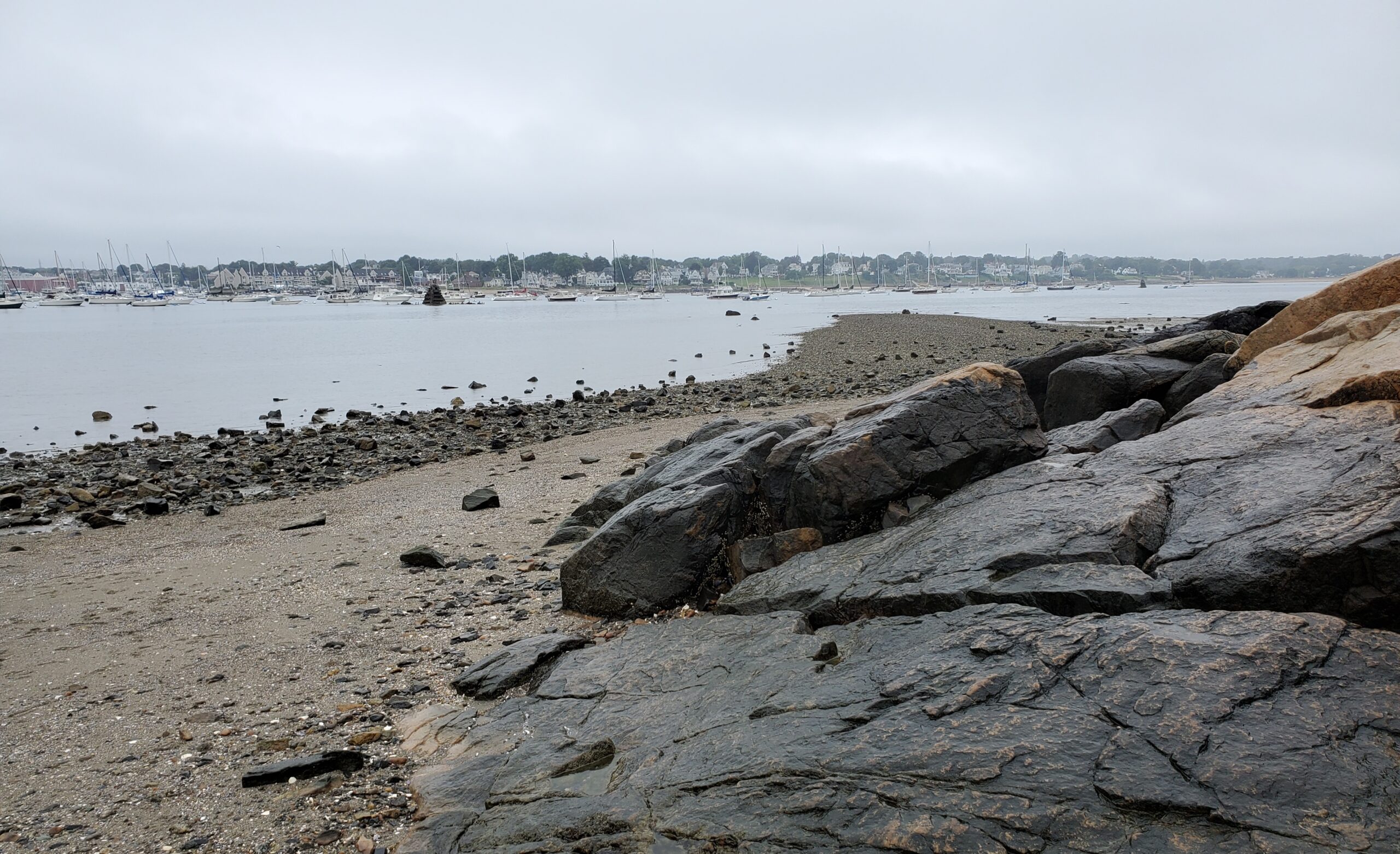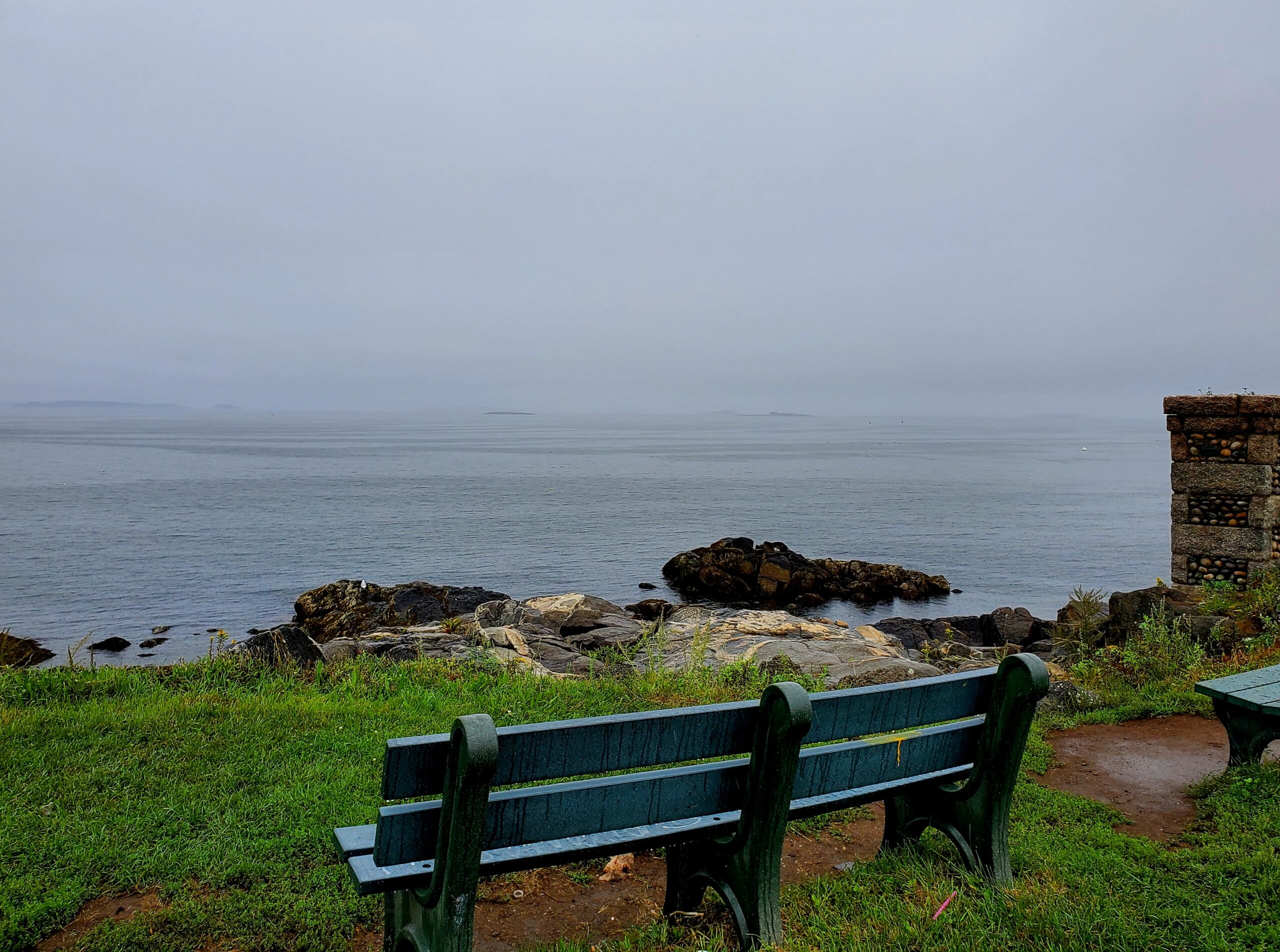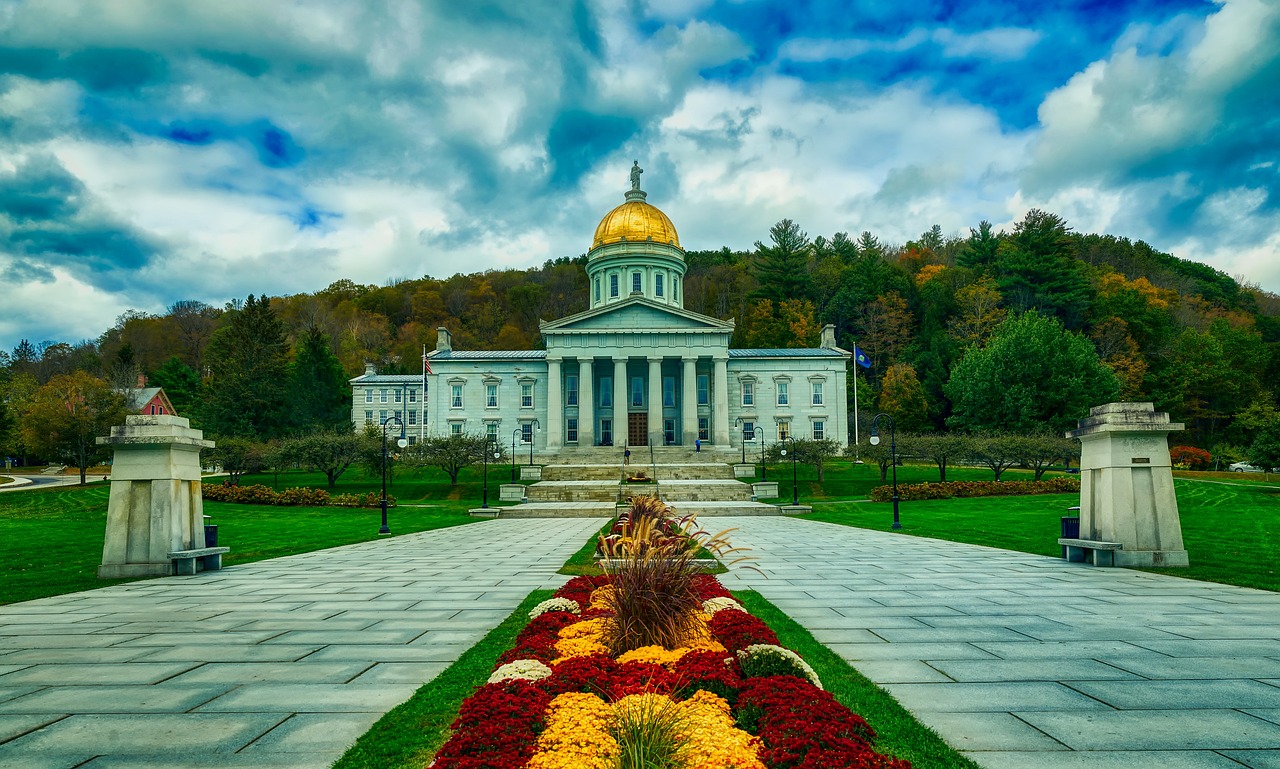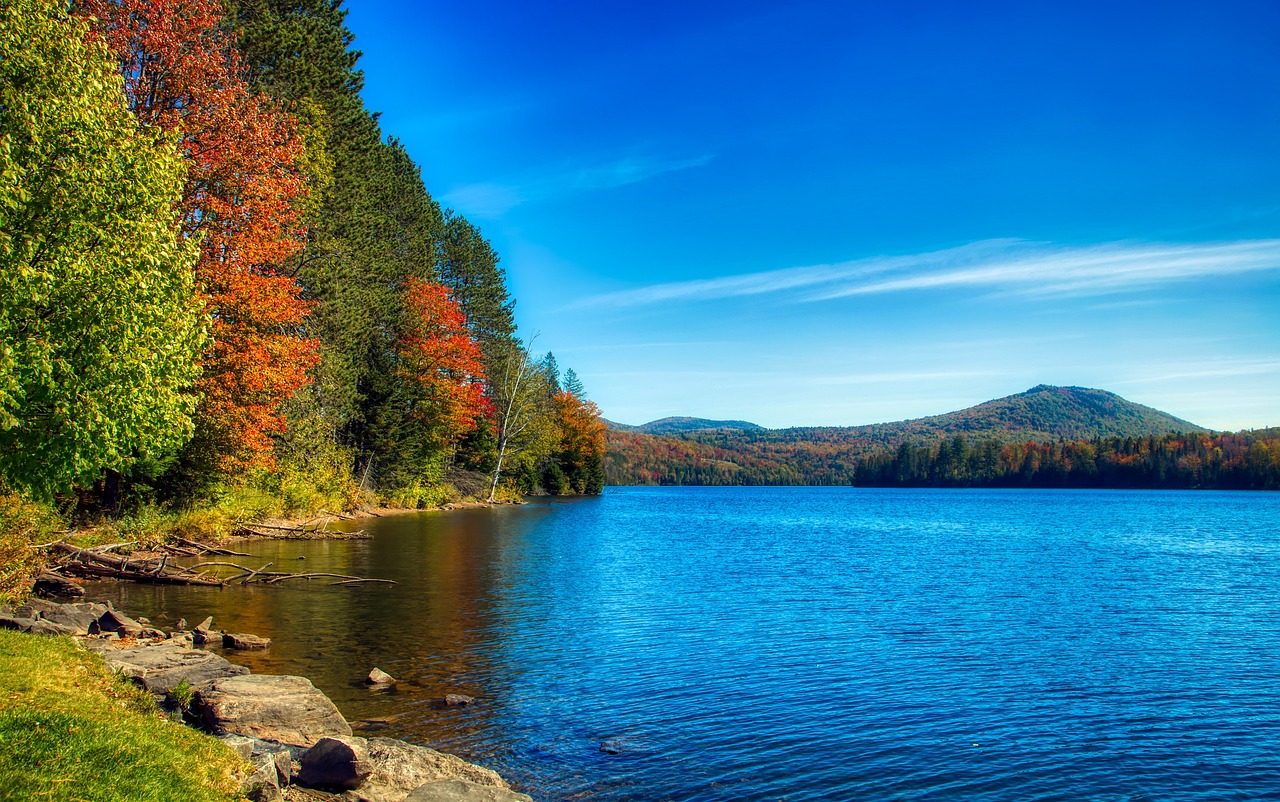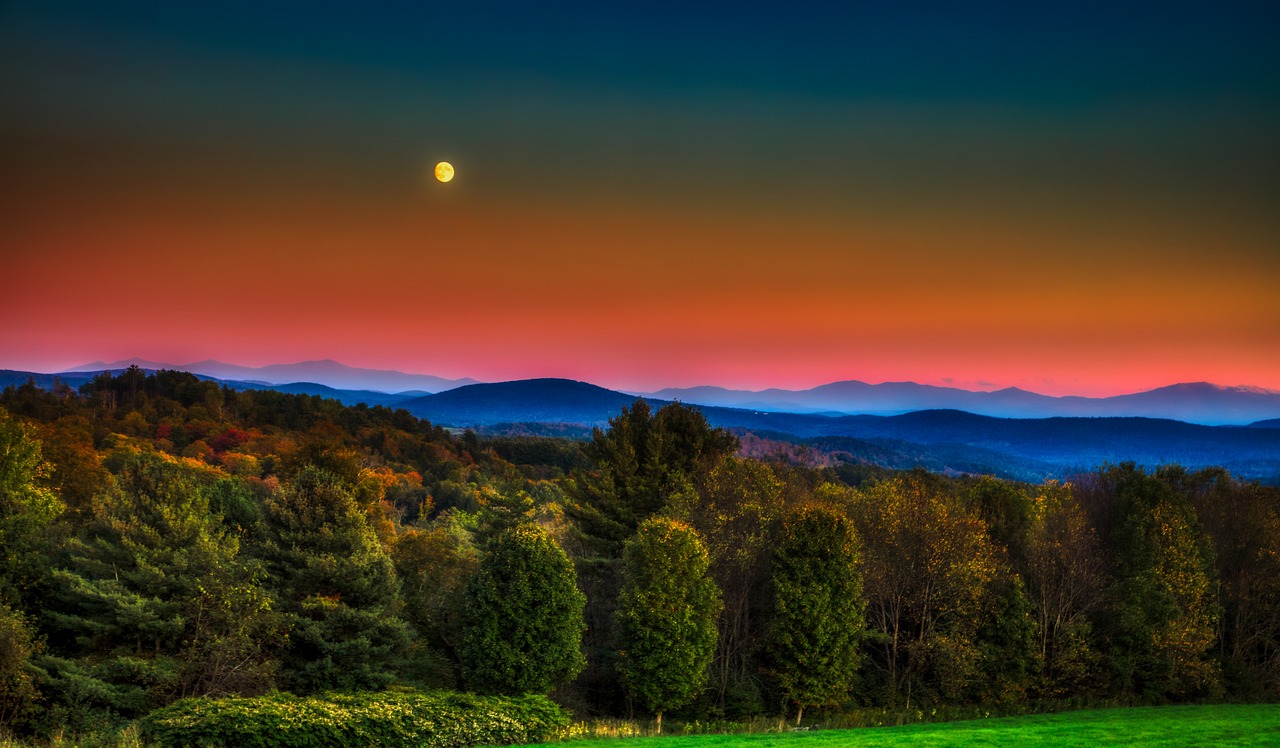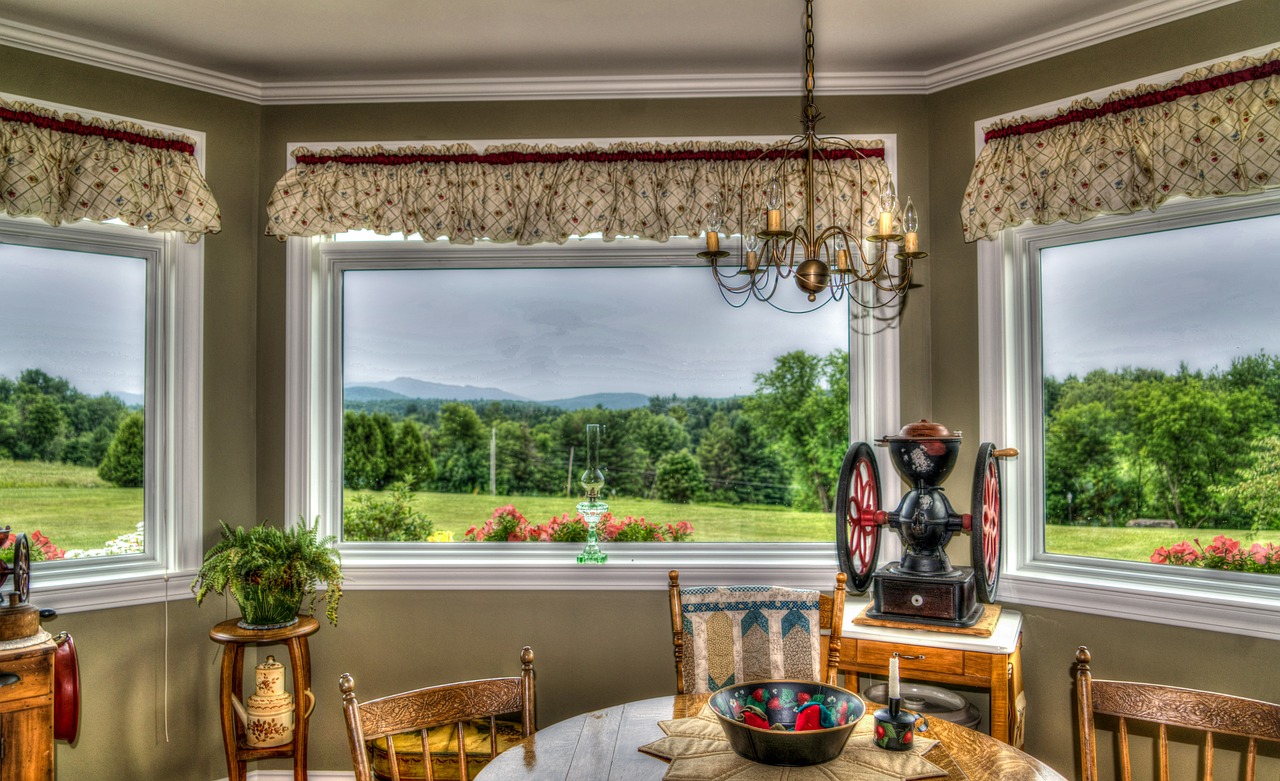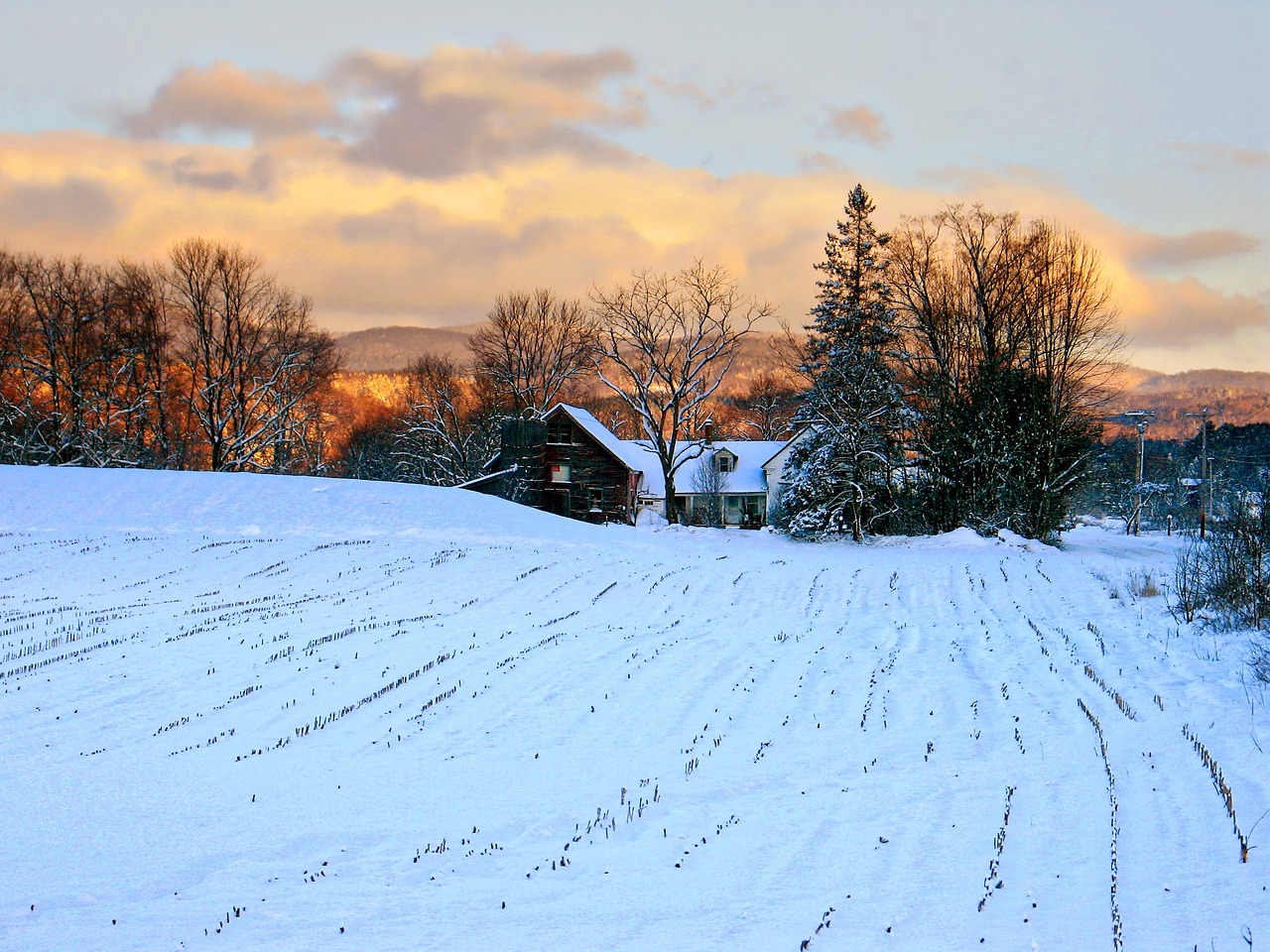Situated in the New England region, Vermont shares its boundaries with neighboring states. To the south, it adjoins Massachusetts, while New Hampshire lies to the east, and New York to the west. To the north, Vermont has an international border with Canada, specifically Quebec. Notably, despite its size, Vermont lacks a coastline along the ocean, distinguishing it from other New England states. Furthermore, it ranks as the second-least populous state in the United States.
Vermont is affectionately known as the “Green Mountain State,” a moniker that reflects its lush natural landscapes. Its name has historical significance; originally called “Verd Mont,” which directly translates to “Green Mountain.” In 1791, Vermont became the 14th state to join the Union, making it one of the early additions but not one of the original 13 colonies. Interestingly, prior to becoming part of the United States, Vermont enjoyed a period of independence from 1777 to 1791.
Vermont, is known for several things that make it a unique and interesting state in the United States. Here are some of the things Vermont is famous for:
Scenic Beauty: Vermont is renowned for its breathtaking natural landscapes, including the Green Mountains, rolling hills, and picturesque valleys. The state’s vibrant foliage during the fall season attracts visitors from all over the world.
Maple Syrup: Vermont is the largest producer of maple syrup in the United States. The state’s sugarhouses produce high-quality, pure maple syrup, and visitors can often tour these operations to learn about the syrup-making process.
Cheese and Dairy: Vermont is known for its dairy products, particularly its artisanal cheeses. Some of the finest cheese producers in the country are located here, offering a variety of delicious cheeses.
Craft Beer: The state has a thriving craft beer scene with numerous microbreweries and brewpubs. Vermont’s craft beers have gained a national reputation for their quality and uniqueness.
Ben & Jerry’s Ice Cream: Ben & Jerry’s, one of the most famous ice cream brands in the world, was founded in Vermont. Visitors can tour the Ben & Jerry’s factory in Waterbury and sample their innovative ice cream flavors.
Outdoor Activities: Vermont is a paradise for outdoor enthusiasts. It offers excellent opportunities for hiking, skiing, snowboarding, snowmobiling, and other outdoor activities. The state’s ski resorts, like Stowe and Killington, are renowned.
History and Covered Bridges: Vermont has a rich history, and you can find numerous historic sites, museums, and covered bridges scattered across the state. The Shelburne Museum and the Calvin Coolidge Homestead are popular attractions.
Progressive Politics: Vermont is known for its progressive politics, including being the first U.S. state to legalize same-sex marriage through legislative action.
Small-Town Charm: The state is characterized by its charming small towns and villages, with idyllic town centers and a sense of community.
Environmental Conservation: Vermont takes environmental conservation seriously, with a strong focus on sustainable agriculture and environmentally friendly practices.
Burlington: Vermont’s largest city, Burlington, is known for its vibrant cultural scene. It’s home to the University of Vermont and offers a mix of art galleries, live music venues, and a bustling waterfront area along Lake Champlain.
Foliage Tourism: The “leaf-peeping” season in Vermont is famous worldwide. During the fall, the state’s foliage transforms into a stunning array of colors, drawing tourists who want to witness the autumn splendor.
Quaint Villages: Vermont is dotted with charming villages like Woodstock, Manchester, and Stowe, where visitors can explore historic architecture, boutique shops, and cozy inns.
Farm-to-Table Cuisine: Vermont’s commitment to locally sourced and sustainable food is reflected in its farm-to-table culinary scene. Many restaurants in the state pride themselves on using fresh, locally grown ingredients.
Robert Frost: The famous American poet Robert Frost lived in Vermont for many years. His former home in Shaftsbury is now a museum dedicated to his life and work.
Arts and Crafts: Vermont has a thriving arts and crafts community, with many artists and artisans creating unique handmade products, from pottery and jewelry to fine art.
Vermont Teddy Bears: The Vermont Teddy Bear Company, headquartered in Shelburne, is known for crafting high-quality, hand-stitched teddy bears. They offer a “Bear-Gram” service where you can send personalized teddy bears as gifts.
Health and Wellness: Vermont has a reputation for a healthy lifestyle, with plenty of opportunities for outdoor activities, yoga retreats, and wellness centers.
Ski Jumping: The annual Harris Hill Ski Jump competition in Brattleboro is one of the oldest ski jumping events in the country and draws top athletes from around the world.
Preservation of Open Space: Vermont is committed to preserving open spaces and maintaining a rural landscape. The state has regulations in place to limit billboards and commercial signage, contributing to its scenic beauty.
While these are some of the things Vermont is famous for, it’s also important to note that the state is known for its friendly and welcoming communities. Vermonters take pride in their state’s unique character and are often eager to share it with visitors. Whether you’re interested in outdoor adventures, culinary delights, or simply enjoying the beauty of nature, Vermont has something to offer everyone.
Vermont is famous for its natural beauty, maple syrup, cheese, craft beer, Ben & Jerry’s ice cream, outdoor activities, historical sites, progressive politics, and small-town charm. While it may not be directly related to your location in Canada, it’s a fascinating state with a lot to offer visitors.
Vermont has a rich and unique history that sets it apart from many other U.S. states. Here’s a more detailed look at the history of Vermont:
Early Inhabitants: Before European settlement, the region now known as Vermont was inhabited by various Native American tribes, including the Abenaki and Mohican. These indigenous peoples had established communities and traded among themselves.
Colonial Period: European exploration and settlement began in the early 1600s. French explorer Samuel de Champlain visited the area in 1609. Vermont was part of the larger territorial struggle between the French and British, and it changed hands several times during the colonial period.
The Vermont Republic: One of the most distinctive chapters in Vermont’s history is its period as an independent republic. On January 15, 1777, Vermont declared itself an independent republic, separate from both British rule and the American colonies. This was a unique move, as Vermont was not one of the original 13 colonies and was not initially part of the United States. During this time, it was known as the “Vermont Republic” and operated independently for 14 years.
Statehood: Vermont’s path to statehood was a complex one. It initially sought to join the United States but faced opposition from New York, which claimed the territory as its own. The dispute, known as the “New Hampshire Grants Controversy,” was eventually resolved through negotiation and the payment of a substantial sum to New York. On March 4, 1791, Vermont became the 14th state to join the Union.
Abolition and the Underground Railroad: Vermont had a strong abolitionist movement in the years leading up to the American Civil War. It was one of the first states to abolish slavery in its constitution in 1777. The state played a significant role in the Underground Railroad, helping escaped slaves find freedom in Canada.
Industrialization: In the 19th century, Vermont experienced industrial growth, particularly in manufacturing and the development of industries like granite quarrying and lumber. This period saw the growth of towns and cities.
Progressive Politics: Vermont has a history of progressive politics. It was a leader in granting civil unions and later full marriage rights to same-sex couples, and it has a tradition of electing independent and third-party candidates to political office.
Environmental Conservation: Vermont has a strong tradition of environmental conservation and sustainable agriculture. It was one of the first states to enact “bottle bill” legislation, promoting recycling, and it places a high value on preserving its natural beauty.
Modern Era: In recent years, Vermont has been known for its commitment to renewable energy, including wind and solar power. It continues to be a popular destination for tourists seeking outdoor activities and a taste of its locally sourced food and beverages.
What are the best things to do in Vermont?
Vermont offers a wide range of activities and attractions for visitors to enjoy. Whether you’re interested in outdoor adventures, cultural experiences, or simply savoring the state’s natural beauty, here are some of the best things to do in Vermont:
Explore the Outdoors:
- Hiking: Vermont is a hiker’s paradise with numerous trails, including the Long Trail and the Appalachian Trail. Don’t miss the scenic hikes in the Green Mountains.
- Skiing and Snowboarding: In the winter, Vermont’s ski resorts like Stowe, Killington, and Stratton offer world-class skiing and snowboarding.
- Kayaking and Canoeing: Paddle along pristine rivers and lakes, including Lake Champlain and the Connecticut River.
- Biking: Vermont offers both road and mountain biking opportunities, with picturesque routes through the countryside.
Enjoy Fall Foliage: Vermont is famous for its stunning fall foliage. Take a scenic drive or hike during the autumn months to witness the vibrant display of colors.
Visit Ben & Jerry’s: Tour the Ben & Jerry’s Ice Cream Factory in Waterbury, where you can see how their delicious ice cream is made and enjoy a scoop of your favorite flavor.
Taste Vermont’s Culinary Delights:
- Maple Syrup: Visit a sugarhouse during sugaring season (late winter to early spring) to learn about maple syrup production and sample fresh syrup.
- Farm-to-Table Dining: Enjoy locally sourced, farm-fresh cuisine in Vermont’s restaurants. The state is known for its commitment to sustainable and organic food.
Explore Charming Towns:
- Burlington: Stroll along Church Street Marketplace, visit the ECHO Lake Aquarium and Science Center, and enjoy the vibrant arts scene.
- Woodstock: Explore this picturesque town with its historic architecture, boutique shops, and the Billings Farm & Museum.
- Stowe: A quintessential New England town surrounded by mountains, Stowe offers outdoor adventures and a quaint village with shops and restaurants.
Art and Culture:
- Shelburne Museum: Discover an extensive collection of art, Americana, and historic artifacts in this unique museum in Shelburne.
- Vermont Symphony Orchestra: Enjoy live classical and contemporary music performances at various venues across the state.
Historical Sites:
- Calvin Coolidge Homestead: Visit the childhood home of the 30th President of the United States, Calvin Coolidge, in Plymouth Notch.
- Hildene, The Lincoln Family Home: Explore the former estate of Robert Todd Lincoln, son of President Abraham Lincoln, in Manchester.
Craft Beer and Spirits: Vermont has a thriving craft beverage scene. Tour breweries like The Alchemist and enjoy tastings at distilleries like Smugglers’ Notch Distillery.
Outdoor Festivals: Vermont hosts various outdoor festivals throughout the year, such as the Vermont Maple Festival, Vermont Cheese Festival, and music festivals like the Burlington Discover Jazz Festival.
Relax at Lake Champlain: Enjoy swimming, boating, and picnicking at Lake Champlain, which offers beautiful sunsets and views of the Adirondack Mountains.
Hot Air Ballooning: Experience the beauty of Vermont from the sky with a hot air balloon ride, which provides breathtaking views of the landscape.
Antiquing: Vermont is known for its antique shops and flea markets. Hunt for unique treasures and vintage items in charming towns.
Covered Bridge Tours: Vermont is famous for its covered bridges. Take a scenic drive and explore these picturesque and historic structures, such as the Emily’s Covered Bridge in Stowe or the Taftsville Covered Bridge near Woodstock.
Vermont Teddy Bear Factory: Visit the Vermont Teddy Bear Company in Shelburne and take a factory tour to see how these iconic stuffed animals are handcrafted. You can even create a personalized bear to take home.
Lake Activities: If you visit during the warmer months, enjoy water activities on Vermont’s lakes, such as fishing, swimming, and sailing. Lake Willoughby, in particular, is known for its clear waters and stunning cliffs.
Appalachian Trail Adventures: If you’re an avid hiker, consider tackling a section of the Appalachian Trail that runs through Vermont. It offers challenging hikes and breathtaking vistas.
Golfing: Vermont has some beautiful golf courses set in scenic landscapes. Enjoy a round of golf with mountain views at courses like Stowe Mountain Club or Jay Peak Resort.
Craft Workshops: Many artisans and craftsmen offer workshops where you can learn traditional skills such as pottery, glassblowing, or blacksmithing.
Birdwatching: Vermont is home to a diverse range of bird species, making it an excellent destination for birdwatching. The Missisquoi National Wildlife Refuge is a prime spot for this activity.
Stargazing: Vermont’s rural areas offer excellent opportunities for stargazing. Consider joining a local astronomy club or simply head to a remote location on a clear night to observe the night sky.
Foliage Drives: While mentioned earlier, it’s worth emphasizing that taking a leisurely drive during the fall foliage season is a quintessential Vermont experience. Routes like the Vermont Scenic Byway offer breathtaking views.
Green Mountain National Forest: Explore the Green Mountain National Forest, which covers over 400,000 acres and offers a wide range of outdoor activities, from hiking and camping to picnicking and wildlife watching.
Rock of Ages Granite Quarry: Take a guided tour of the Rock of Ages Granite Quarry in Barre, one of the world’s largest granite quarries. It’s a fascinating look into the stone-cutting industry.
Cultural Events: Check out local cultural events and festivals, such as the Vermont International Film Festival or the Vermont Quilt Festival, which celebrate the arts and crafts of the region.
Visit Farms and Farmers’ Markets: Vermont’s farms are known for their fresh produce and artisanal products. Visit local farms and farmers’ markets to taste and buy locally grown food and handmade goods.
Vermont’s diverse range of activities and attractions ensures that there’s always something interesting to do, regardless of the season. Whether you’re seeking outdoor adventures, cultural experiences, or a taste of the state’s culinary delights, Vermont has it all.
Whether you’re an outdoor enthusiast, a foodie, an art lover, or simply seeking relaxation in a serene natural setting, Vermont has something to offer every traveler. Its diverse attractions and friendly communities make it a delightful destination year-round.
Vermont hosts a variety of festivals and events throughout the year, celebrating its culture, heritage, and the changing seasons. These festivals offer a great way to experience the state’s vibrant communities and unique traditions. Here are some notable Vermont festivals:
Vermont Maple Festival:
- Location: St. Albans
- Time: Late April
- Highlights: Celebrate Vermont’s famous maple syrup production with activities like pancake breakfasts, maple syrup tastings, cooking demonstrations, and a grand parade.
Burlington Discover Jazz Festival:
- Location: Burlington
- Time: Early June
- Highlights: This renowned festival features live jazz performances by local and international artists, as well as street performances, workshops, and jam sessions.
Vermont Quilt Festival:
- Location: Essex Junction
- Time: Late June
- Highlights: Quilters and fabric enthusiasts gather to showcase their craftsmanship, attend workshops, and admire intricate quilt displays.
Strolling of the Heifers:
- Location: Brattleboro
- Time: Early June
- Highlights: This unique parade celebrates Vermont’s dairy industry and agriculture. It includes heifers, tractors, floats, and a “Slow Living” expo promoting sustainability.
Vermont Brewers Festival:
- Location: Burlington (summer edition) and Killington (winter edition)
- Time: Summer and Winter
- Highlights: Beer enthusiasts can sample a wide range of craft beers from Vermont’s local breweries while enjoying live music and scenic views.
Vermont Cheesemakers Festival:
- Location: Shelburne
- Time: Late July
- Highlights: Cheese lovers can taste a variety of artisanal cheeses and other local food products. The festival includes workshops, farm tours, and cooking demonstrations.
Vermont Garlic & Herb Festival:
- Location: Bennington
- Time: Early September
- Highlights: Celebrate the culinary uses of garlic with tastings, cooking demonstrations, live music, and a “garlic shot” competition.
Stowe Foliage Arts Festival:
- Location: Stowe
- Time: Early October
- Highlights: This festival showcases the work of fine artists and crafters against the backdrop of Vermont’s stunning fall foliage.
Vermont International Film Festival (VTIFF):
- Location: Burlington
- Time: Late October
- Highlights: VTIFF features independent and international films, along with discussions, filmmaker Q&A sessions, and workshops.
Okemo Hops in the Hills Beer & Wine Festival:
- Location: Ludlow
- Time: Late August
- Highlights: Sample craft beers, ciders, and wines while enjoying live music, food vendors, and family-friendly activities.
Vermont History Expo:
- Location: Various locations in Vermont
- Time: Biennial (even years)
- Highlights: This event explores Vermont’s rich history through reenactments, exhibits, demonstrations, and talks.
Vermont Pumpkin Chuckin’ Festival:
- Location: Stowe
- Time: Late September
- Highlights: Teams compete to launch pumpkins through the air using various contraptions. It’s a fun and unique event for the whole family.
These festivals not only offer a chance to immerse yourself in Vermont’s culture and traditions but also provide opportunities to connect with locals and experience the state’s warm hospitality. Keep in mind that festival dates and details may vary from year to year, so it’s a good idea to check the latest information before planning your visit.
Vermont is nationally recognized as one of the four states in the United States that have chosen to eschew billboards; the other three being Maine, Hawaii, and Alaska. Billboards are a common sight on American roads, so much so that their absence is glaringly noticeable. However, it’s not as if we genuinely miss them, is it?
In 1968, Vermont implemented the State Billboard Act, becoming the second state to prohibit billboards, especially off-premise advertising signs. On-premise signs are still permitted under specific conditions. Instead of billboards, the state uses travel information signs along its highways.
This pioneering legislation was crafted with the goal of decluttering road corridors. Billboards are inherently attention-grabbing, diverting focus from road safety and the inherent beauty of a location. Given that tourism is Vermont’s largest industry, this law plays a pivotal role in preserving its natural charm. According to a study conducted by Gibson in 2012, the “absence of advertising is frequently cited as one of the aspects visitors appreciate most about Vermont.”
What other states have banned billboards?
Several states in the United States have implemented restrictions or bans on billboards, often with the aim of preserving natural landscapes, enhancing road safety, or reducing visual clutter. While complete bans like Vermont’s are relatively rare, many states have specific regulations governing the size, location, and content of billboards. Here are some states that have significant restrictions or bans on billboards:
Maine: Like Vermont, Maine is known for its strict regulations on billboards. It restricts or prohibits billboards in many scenic areas to maintain the state’s natural beauty.
Hawaii: Hawaii has implemented strict controls on billboards, particularly in order to protect the state’s unique and picturesque landscapes.
Alaska: Alaska has stringent regulations on billboards to maintain its scenic vistas and natural environment.
Rhode Island: Rhode Island has adopted strict billboard regulations to protect its scenic and historic areas.
Massachusetts: Massachusetts has implemented a range of restrictions on billboards, particularly in scenic and historic districts.
New York: New York has zoning regulations that restrict billboard placement in various parts of the state, especially in rural and scenic areas.
New Hampshire: New Hampshire has specific laws governing billboard placement and size, with an emphasis on preserving the state’s natural beauty.
California: California has stringent regulations on billboards, including restrictions on their size and placement, particularly in scenic and historic areas.
Oregon: Oregon has laws that limit billboard placement and size, especially along certain highways and scenic byways.
Vermont (as mentioned): Vermont is notable for its complete ban on billboards, except for specific on-premise signs and travel information signs.
It’s important to note that the specific regulations and restrictions on billboards can vary widely within these states, and some areas within a state may have different rules. Billboard regulations are typically governed by state and local zoning laws and ordinances. As a result, it’s advisable to check with local authorities or transportation departments for the most up-to-date information regarding billboard regulations in a specific area.
What are some famous landmarks in Vermont?
Vermont boasts a variety of famous landmarks that showcase its natural beauty, history, and culture. Here are some notable landmarks in the state:
Ben & Jerry’s Ice Cream Factory: Located in Waterbury, this iconic factory offers tours where visitors can learn about the ice cream-making process, sample delicious flavors, and visit the Flavor Graveyard.
Lake Champlain: This scenic freshwater lake stretches across Vermont’s western border and offers opportunities for boating, fishing, and enjoying beautiful sunsets.
Church Street Marketplace: Situated in Burlington, this historic pedestrian mall features a lively atmosphere with shops, restaurants, street performers, and outdoor cafes.
Shelburne Museum: This unique museum in Shelburne houses an extensive collection of art, Americana, and historic artifacts in multiple exhibit buildings.
Hildene, The Lincoln Family Home: Located in Manchester, this historic estate was the summer home of Robert Todd Lincoln, the son of President Abraham Lincoln. Visitors can tour the mansion and beautiful gardens.
Quechee Gorge: Known as the “Little Grand Canyon of Vermont,” this stunning gorge offers hiking trails and impressive views of the Ottauquechee River.
Billings Farm & Museum: Situated in Woodstock, this working farm and museum offers educational exhibits and interactive experiences that showcase Vermont’s agricultural history.
Green Mountain Byway: This scenic drive takes you through the heart of Vermont’s Green Mountains and offers breathtaking views of the landscape, including the Stowe and Smugglers’ Notch areas.
Rock of Ages Granite Quarry: Located in Barre, this quarry is one of the world’s largest granite quarries. Guided tours provide insight into the stone-cutting industry, and visitors can see the impressive rock formations.
Vermont State House: Montpelier, the state capital, is home to the Vermont State House, a stunning neoclassical building that houses the state’s legislative chambers.
Morse Farm Maple Sugarworks: This family-owned sugarworks in Montpelier offers tours that explain the maple syrup-making process, and visitors can sample Vermont’s famous maple products.
Mount Mansfield: Vermont’s highest peak, Mount Mansfield offers excellent hiking and skiing opportunities. The summit offers panoramic views, especially from the famous “Nose” and “Chin.”
Vermont Teddy Bear Factory: Located in Shelburne, this factory allows visitors to see how these beloved teddy bears are made and even create custom bears.
Chimney Point State Historic Site: This historic site in Addison includes a museum and a walking trail that explores the region’s Native American and colonial history.
Southern Vermont Covered Bridges: Vermont is famous for its covered bridges, and the southern part of the state features several, including the West Dummerston Covered Bridge and the Creamery Covered Bridge.
These landmarks offer a diverse range of experiences, from exploring history and culture to enjoying Vermont’s stunning natural scenery. Whether you’re interested in outdoor adventures or cultural attractions, Vermont has something for every traveler to enjoy.
Vermont’s natural beauty is a source of pride for its residents and a major draw for visitors. Whether you’re exploring the Green Mountains, taking in the fall foliage, or enjoying outdoor adventures by the lakes and rivers, Vermont’s landscapes offer a genuine connection to the beauty of the natural world.
Vermont’s hiking trails
Vermont offers a diverse range of hiking trails, catering to both casual hikers and experienced adventurers. The state’s lush forests, rugged mountains, and picturesque landscapes provide the perfect backdrop for outdoor exploration. Here are some of the key hiking trails and areas in Vermont:
Long Trail: The Long Trail is Vermont’s most famous and challenging hiking trail, running for approximately 273 miles from the Massachusetts border to the Canadian border. It traverses the entire length of the Green Mountains and offers a rugged and remote wilderness experience. Hikers can take on shorter sections or complete the entire trail, which usually takes several weeks.
Appalachian Trail: Vermont hosts a section of the Appalachian Trail (AT), a long-distance trail that stretches from Georgia to Maine. The Vermont portion offers beautiful views and includes iconic sites like Glastenbury Mountain and Stratton Mountain, home to the former fire tower that inspired the AT’s creation.
Camel’s Hump: This distinctive mountain features a cone-shaped peak and is one of Vermont’s most iconic hikes. The Monroe Trail is a popular route to the summit, offering panoramic views of the surrounding landscape.
Mount Mansfield: As Vermont’s highest peak, Mount Mansfield is a hiker’s favorite. The “Chin” and “Nose” are the mountain’s two main peaks, with various trails leading to each. The Long Trail crosses the ridge of Mount Mansfield, offering challenging and rewarding hikes.
Killington: The Killington region offers an extensive network of trails, including the Appalachian Trail. The Killington Peak Trail provides a relatively easy route to the summit, where you can take in panoramic views.
Smugglers’ Notch: Known for its unique rock formations and scenic beauty, Smugglers’ Notch State Park offers several hiking trails of varying lengths and difficulties. The Sterling Pond Trail is a popular option, leading to a serene mountain pond.
Quechee Gorge: Explore the Quechee Gorge State Park and take the trail that leads to the bottom of Vermont’s “Little Grand Canyon.” It’s an easy hike with stunning views of the gorge.
Bread Loaf Wilderness: Part of the Green Mountain National Forest, the Bread Loaf Wilderness offers solitude and scenic beauty. The Emily Proctor Trail is a favorite for its picturesque forests and waterfalls.
Mount Ascutney: Located in southern Vermont, Mount Ascutney offers a variety of trails, including the Weathersfield Trail and Windsor Trail, which lead to the summit and provide excellent views of the surrounding landscape.
Lye Brook Falls Trail: Near Manchester, this trail leads to Lye Brook Falls, one of Vermont’s tallest waterfalls. It’s a relatively easy hike with a rewarding natural attraction at the end.
Bird Watching Trails: Vermont is a birdwatcher’s paradise, with numerous birding trails across the state. Places like Missisquoi National Wildlife Refuge offer excellent opportunities to observe various bird species.
Before embarking on a hike in Vermont, it’s important to check trail conditions, carry essential gear, and be prepared for changing weather conditions, especially in the mountains. Additionally, respect Leave No Trace principles to help preserve Vermont’s pristine wilderness for future generations to enjoy.
Hello everyone, I am the main writer for SIND Canada. I’ve been writing articles for more than 10 years and I like sharing my knowledge. I’m currently writing for many websites and newspaper. All my ideas come from my very active lifestyle. I always keep myself very informed to give you the best information. You can contact me on our contact page or by email at: info@sind.ca.


